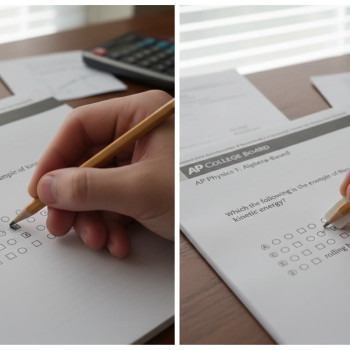Why Sight Reading and Grammar Patterns Matter in AP Latin
If you’re standing at the threshold of AP Latin, you probably know two things already: the exam expects you to read Latin that’s authentic and sometimes surprising, and grammar isn’t an optional accessory — it’s your map. Sight reading is the muscle you build to translate on the fly; grammar patterns are the scaffolding that make that translation accurate and efficient. Together they turn a slow, word-by-word slog into a confident, expressive reading experience.

What “Sight Reading” Really Means
Sight reading in Latin isn’t the same thing as casually guessing what a sentence might mean. It’s an organized, methodical approach to translating unseen passages with attention to grammatical cues, verb forms, and rhetorical markers. In the AP Latin classroom, sight reading tasks assess whether you can:
- Recognize key morphological forms quickly (cases, tense, mood, voice);
- Parse syntax to find the subject, verb, and essential modifiers;
- Spot idiomatic expressions and common constructions;
- Bring cultural and contextual awareness to bear when a literal reading misses the point.
In practice, a strong sight reader does the heavy lifting of grammar mentally so they can pay attention to nuance, style, and meaning.
Start with the Right Mindset
Turn fear into curiosity. Every unfamiliar sentence is a tiny puzzle that gets easier with the right pieces in your toolkit. Adopt these attitudes:
- Process over perfection: aim for accurate comprehension rather than flawless word-for-word translation on the first try.
- Pattern recognition: notice recurring grammatical shapes and how they change meaning.
- Active hypothesis testing: make a provisional translation and check it against case endings and verb forms.
Example Mindset in Action
Instead of reading: “Ugh, an odd word order — I’m stuck,” try: “That inversion probably marks emphasis; let me identify the verb and work outward.” That tiny shift often short-circuits confusion.
Core Grammar Patterns to Master
There are a handful of grammatical constructions that appear over and over in Latin literature. Internalize these and you will decode texts much faster. Below are the most high-leverage patterns, with short explanations and quick tips for spotting them.
1. The Accusative with Infinitive (Indirect Statement)
What it looks like: a clause where a verb of saying, thinking, perceiving, or feeling introduces an Accusative + Infinitive construction (accusative subject of the infinitive + infinitive verb).
Tip: Once you find a verb like dico, puto, or video, scan for an accusative noun followed by an infinitive. Translate as “that …” (e.g., “He says that the men are brave.”)
2. Ablative Uses — Absolute, Means, and Agent
Why it’s tricky: the ablative does many jobs. The ablative absolute is a common stylistic device — a small clause set off from the main sentence that provides background information.
Tip: If you see a noun and participle both in the ablative near each other and not agreeing with other words, try reading them as a small clause (“With the city having been taken…”).
3. Subordinate Clauses: Cum, Quod, Quia, Ut
Cum can signal temporal or causal relationships (and sometimes concessive meanings). Ut often introduces purpose or result clauses; nemo will change how you interpret negative constructions.
Tip: Practice identifying the conjunction first, then the verb mood (indicative or subjunctive) — that will tell you the clause’s basic function.
4. Participial Phrases
Participles act like verbs and adjectives at the same time — they provide compressed information about action and description. Recognize whether they are modifying a noun or forming an ablative absolute.
5. Gerunds and Gerundives
Gerunds function as verbal nouns (often used with the genitive, dative, accusative, or ablative), while gerundives are passive verbal adjectives expressing necessity.
Tip: Watch endings carefully. A gerundive modifies a noun and often implies obligation (“must be done”).
6. Indirect Questions and Subjunctive Mood
Indirect questions use the subjunctive after verbs of asking, knowing, or wondering. Recognizing the question word (quis, quid, quando, cur, etc.) plus a subjunctive verb is the giveaway.
How to Practice Sight Reading: A Step-by-Step Routine
The following routine takes about 20–30 minutes and can be done daily. It’s designed to build speed, accuracy, and comfort with a variety of authors and styles.
- Warm-up (3–5 minutes) — Quickly review a small morphology chart: present, perfect, and participle endings; common irregular verbs; and pronouns. This primes your recognition speed.
- Focused Drill (10 minutes) — Pick a single grammar pattern (e.g., ablative absolute). Translate 3–4 short sentences that use the pattern. Correct and annotate each sentence: underline the critical words and write the structural label (“abl. abs.”).
- Sight Passage (10–15 minutes) — Read a short unseen passage (4–8 lines). Don’t stop for every word; identify the main verb(s), marking subjects and objects as you go. Create a quick literal translation, then refine for idiom and style.
- Reflection (2–3 minutes) — Jot down one pattern that tripped you up and one victory (“I recognized a tricky indirect statement!”). Make a note to revisit the difficulty later.
Practical Tips to Speed Up Parsing
- Train your eye to spot case endings first (nominative and accusative endings are high-yield). Visual pattern recognition takes a lot of processing time off your working memory.
- Circle or highlight verbs in their finite form and underline infinitives and participles. Your brain loves anchors; verbs are anchors in Latin sentences.
- Translate in layers: literal meaning first, then smooth to idiomatic English, then check for rhetorical emphasis.
- Read aloud occasionally. Latin’s rhythm often clarifies ambiguous constructions.
Common Sight-Reading Pitfalls and How to Avoid Them
Let’s tackle the usual suspects — those recurring mistakes that steal points on exams and confidence off them.
Pitfall: Over-Translating Word Order
Latin word order is flexible; translating into English word order can distort the original emphasis. Instead, identify the grammatical relationships first, then reorganize for natural English.
Pitfall: Missing Subordinate Clauses
If you translate a subordinate clause as if it were the main clause, you will lose the sentence’s logic. Tag conjunctions immediately and determine verb moods to clarify clause boundaries.
Pitfall: Forgetting Idioms
Latin idioms (e.g., ob eas causas, ad hoc) don’t translate literally. Keep a running list of idioms you encounter in readings and practice translating them in context.
Using Data and Routine to Track Progress
Measuring improvement is motivating — and essential. Here’s a simple table you can use weekly to track your speed and accuracy during sight reading practice. Fill it out after each session for six weeks and watch trends emerge.
| Week | Passages Done | Average Time per Passage (min) | Literal Accuracy (%) | Notes / Patterns Missed |
|---|---|---|---|---|
| 1 | 5 | 12 | 70 | Indirect statements, ablative uses |
| 2 | 6 | 11 | 75 | Participles |
| 3 | 6 | 9 | 80 | Gerundives |
| 4 | 7 | 9 | 83 | Subjunctives in indirect questions |
| 5 | 7 | 8 | 86 | Improved parsing speed |
| 6 | 8 | 7 | 90 | Consistent recognition of patterns |
Applying Reading Strategies to Vergil and Pliny
The AP Latin syllabus emphasizes Vergil’s Aeneid and selections from Pliny the Younger. These authors present distinct reading challenges and rewards.
Vergil (Poetry)
Poetry compresses meaning; word order can be unusually fluid for metrical reasons. Vergil’s use of enjambment, epic similes, and word placement to create emphasis means you must be alert to rhetorical devices as well as grammar.
Strategy: When sight reading poetry, look for the main verb and its subject within a line or two, then expand outward. Practice scanning dactylic hexameter briefly to get a sense of where pauses occur; the scansion often highlights phrase boundaries.
Pliny (Prose)
Pliny’s letters are compact and conversational, with many subordinate clauses that encode causality, explanation, and rhetorical flourish. He uses direct speech, narrative shifts, and vivid details.
Strategy: For prose, pay extra attention to chronological markers (tum, deinde, post) and to verbs indicating reporting (dicit, narrat) — these often anchor the overall flow and the placement of subordinate clauses.
Integrating Vocabulary and Morphology Practice
Strong sight readers pair grammar with a targeted vocabulary study. Instead of trying to memorize every possible word, focus on high-frequency vocabulary lists and morphological families (e.g., memorizing the root and common derivatives).
- Create flashcards that include the lemma, principal parts, common derivatives, and a sample sentence showing the word in context.
- Group vocabulary by thematic sets (war, household, politics, nature) — context helps retention.
- Use short daily drills (5–10 minutes) that mix translation with quick parsing questions (“Identify the case and use of ‘urbe’ in this sentence”).
How to Use Mock Exams and Timed Practice
Simulate exam conditions regularly. The AP Latin assessment rewards steady pacing: it’s a combination of multiple-choice and free-response tasks that measure comprehension and interpretive skill.
Practice tip: Do at least one timed section per week that mirrors exam timing. Afterward, mark the errors by type (vocabulary, parsing, clause recognition, misreading of idioms). This targeted review will make your practice exponentially more effective.
Study Plan Example: 8-Week Sprint to a Strong Sight Reading Game
This is a compact, realistic plan for students who have basic intermediate Latin knowledge and want dramatic improvement in sight reading and grammar in two months.
- Weeks 1–2: Morphology bootcamp — daily 20-minute morphology drills + 10-minute sight passages. Focus on verb forms and participles.
- Weeks 3–4: Grammar-pattern consolidation — each week select 3 patterns (e.g., indirect statement, ablative absolute, indirect questions). Do targeted drills + 2 sight passages per day.
- Weeks 5–6: Author focus — alternate days reading short Vergil passages and short Pliny letters. Emphasize stylistic markers and metrical scanning for Vergil.
- Weeks 7–8: Mock exam and weakness patching — full timed sections each week, plus daily 15-minute targeted practice on the weak spots you identified in earlier weeks.
How Personalized Tutoring Can Fit In
Everyone’s learning curve is different. Some students stall on ablative uses, others on subjunctive moods. That’s where tailored support shines. Personalized tutors can diagnose recurring errors, create a plan that targets those patterns, and offer feedback in real time so mistakes don’t become habits.
If you’re considering extra help, Sparkl’s personalized tutoring model can be highly effective: 1-on-1 guidance to identify your unique trouble spots, tailored study plans to accelerate mastery, expert tutors who know the AP Latin syllabus and exam expectations, and AI-driven insights to track progress and adjust practice. When tutoring complements disciplined self-study, results compound quickly.
Sample Mini-Lessons: Split-Second Strategies
Here are three mini-lessons you can practice in five minutes each. These are designed to become reflexes.
Mini-Lesson 1: “Verb First, Always”
Scan the sentence and find the finite verb(s) immediately. Circle them. Ask: who is doing this? Once you find the verb and its subject, other parts of the sentence fall into place more easily.
Mini-Lesson 2: “Case Check”
Quickly list the nouns and their cases. If you see two nouns, one in nominative and one in accusative, you’ve probably located the core of the clause (subject and direct object). If neither noun is nominative, double-check for passive constructions or nominative omitted subjects (especially in poetry).
Mini-Lesson 3: “Conjunction Tagging”
Underline conjunctions and relative pronouns. Label them (tempt: temporal, causal, purpose, relative). Once tagged, you can avoid misreading subordinate material as the main idea.
Real-World Context: Why Latin Still Matters
Studying Latin is not just an academic exercise; it sharpens analytical reading habits that transfer to modern languages, logic, law, medicine, and philosophy. The precision you learn in Latin sight reading — noticing exact grammatical relationships, parsing dense information, and translating between structures — builds cognitive skills useful across disciplines.
Bringing It All Together: A Mini Case Study
Meet Maya, a hypothetical AP Latin student. She could translate slowly but made frequent errors with indirect statements and participles. Maya adopted a focused routine: ten minutes of morphology drills, ten minutes of pattern-specific practice, and a daily 6-line sight passage. After six weeks she reduced average time per passage by 30% and increased literal accuracy from 68% to 88%.
Key to her success: targeted drills, regular timed practice, and a short weekly check-in with a tutor who helped refine her approach to poetic inversion and indirect statements. That combination — disciplined practice plus occasional expert feedback — is replicable and reliable.

Final Thoughts: Make Sight Reading a Habit, Not a Chore
The pathway from hesitant translator to confident reader is one of small, consistent steps. Prioritize pattern recognition, train your eye to spot verbs and case endings quickly, and layer that work with context and stylistic awareness. Use timed practice to build stamina and unsustainable perfectionism to minimalize. When you do encounter persistent obstacles, targeted 1-on-1 tutoring — such as Sparkl’s approach of tailored study plans and expert feedback — can accelerate progress and keep your momentum on track.
Latin rewards patience. Each sentence you parse becomes a little triumph. Over time, you’ll move from translating single clauses to savoring how the language organizes thought, argument, and emotion — and that, in the end, is the real joy of studying Latin.
Quick Reference Checklist for Every Sight Reading Session
- Scan for finite verbs first.
- Identify nominative and accusative nouns to find the main clause.
- Tag conjunctions and relative pronouns to mark subordinate clauses.
- Spot participles and decide whether they are adjectival or part of an ablative absolute.
- Look for common idioms and translate them as units.
- Reflect briefly on one recurring mistake and schedule a focused fix.
Want a Personalized Plan?
If you’d like help turning this guide into a week-by-week plan tailored to your strengths and weaknesses — with targeted drills and feedback — a personalized tutor can bridge the gap between practice and performance. Small, smart interventions often yield outsized gains.
Good luck — and enjoy the reading. The Latin texts you’re studying are more than homework; they’re conversations across millennia, and with a few reliable habits, you’ll be part of that conversation, confident and curious.




















No Comments
Leave a comment Cancel